
M41 Paratrooper Jump Jacket Front
The M41 airborne jump suit was the predecessor of the more widely used (during WW2) M42 jump suit. The M41 jump jackets and jump pants were made for a brief time in 1941, before it was decided that changes needed to be made to the paratrooper jump suit. These changes were them incorporated into the M42 jump suit.
The biggest difference between the M41 and M42 jump suits were the pockets. The M41 pockets were sewn flat on to the jacket and pants. This did not allow much to be put in them. It was decided that they should be expandable, much like the pockets seen on modern cargo pants/shorts, and that change was implemented on the M42 suit. Also, the pockets on the M41 jump jacket each only had one snap to close them. It was decided that was not enough and when the M42 suit went into production, there were two snaps on each jacket pocket.
There were some other minor changes. For example, the side zippers at the bottom of each pants leg were deemed not necessary and were dropped from the M42 jump pants. Also, the M41 jacket belt was sewn directly on to the jacket on the back and had a button snap on the end, while the M42 belt was only sewn on to the jacket by a small piece of fabric and replaced the button snap with a fabric loop.
Although all collectors, myself included, have a tendency to over use the term rare, the M41 jump suit is extremely hard to find and I think would appropriately be classified as rare. There are only a handful of complete M41 jump suits in private collections today. Since it was only issued for brief amount of time and at this time the US airborne forces were small, there were not many of them made. Additionally, paratroopers that were issued them did sometimes continue to wear them throughout WWII, which resulted in many of them being used up. Although the jump suit was replaced by the M43 suit in 1944, paratroopers were occasionally photographed wearing both the M41 and M42 jump jackets and/or jump pants throughout the War.
This particular suit belonged to an early member of the US Airborne forces that later became a member of the 517th PIR during World War Two. In addition to this suit, he brought back many other nice early airborne items including an early paratrooper training helmet and early paratrooper hawley liner. I also own those items and they will be the subjects of later posts.
-

-
M41 Paratrooper Jump Jacket Front
-

-
M41 Paratrooper Jump Jacket Front Close Up
-

-
M41 Paratrooper Jump Jacket Back
-

-
M41 Paratrooper Jump Pants Right Side View
-

-
M41 Paratrooper Jump Pants Left Side Detail
-

-
M41 Paratrooper Jump Pants Pocket Detail
-

-
M41 Paratrooper Jump Pants Leg Zip Detail
-

-
M41 Paratrooper Jump Pants Interior
















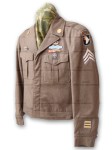








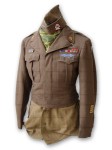





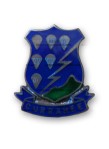


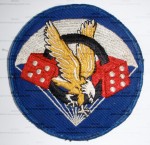
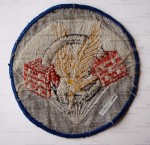















































You must be logged in to post a comment.